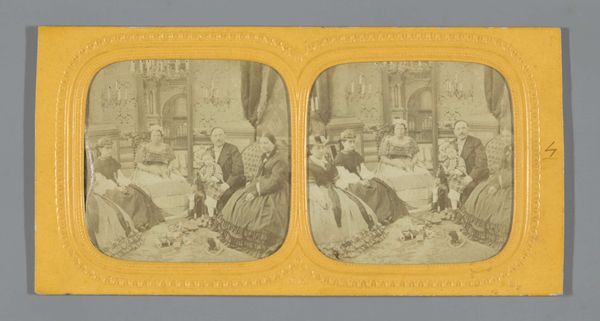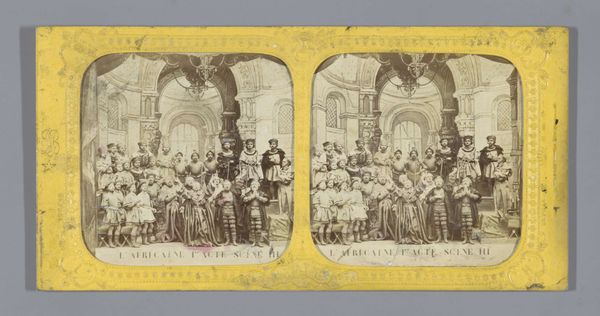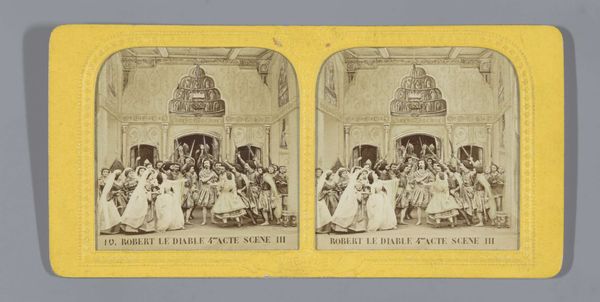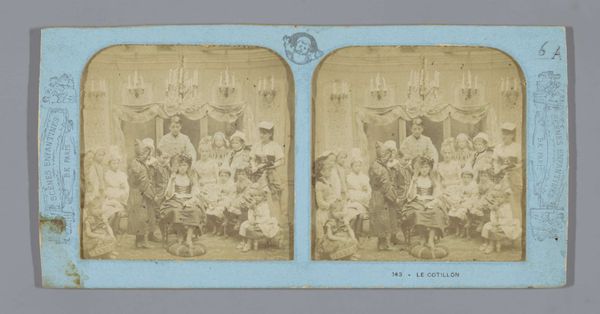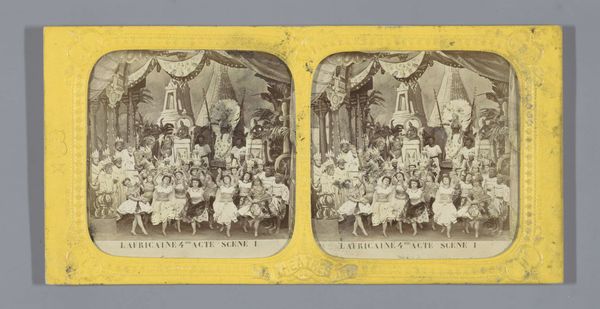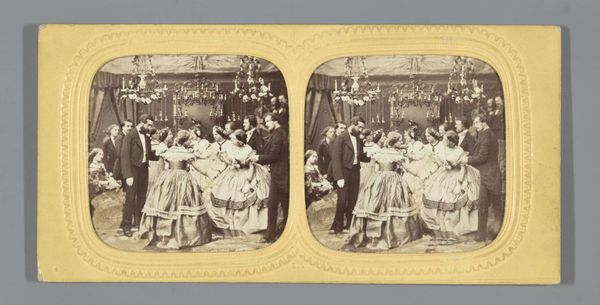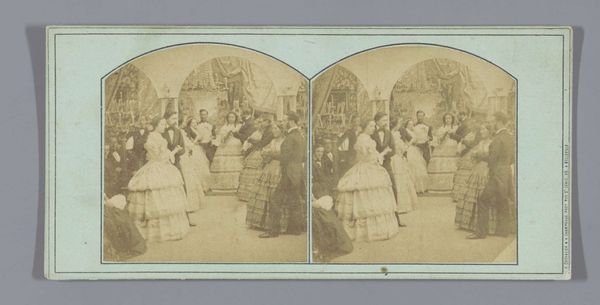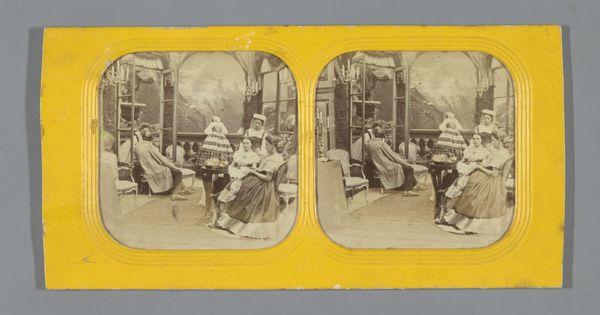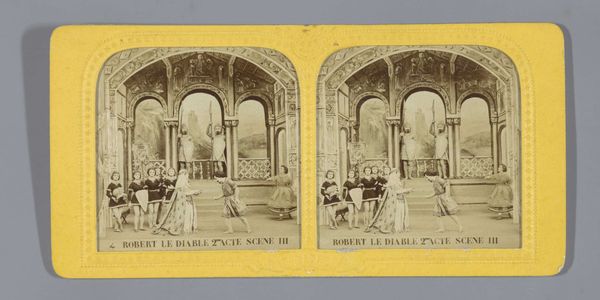
performance, print, photography
#
portrait
#
performance
# print
#
photography
Dimensions: height 87 mm, width 174 mm
Copyright: Rijks Museum: Open Domain
Editor: Here we have "Second Act, Fourth Scene of L'Africaine" created between 1873 and 1874. It's an anonymous photographic print, part of the Rijksmuseum collection. It appears to capture a scene from an opera. The rigid symmetry of the composition across both panels strikes me, along with the way the architecture seems to dominate the figures. How do you read the visual organization of this work? Curator: The diptych form immediately creates a structural mirroring, inviting a comparative analysis. Observe how the repetition isn't exact. The slight shifts in the figures' arrangements emphasize the photographic capture of a temporal performance rather than a static tableau. The receding arches, a key formal element, establish depth and draw the eye toward a vanishing point, controlling our gaze within the theatrical space. Note the tonal range: how does it serve to organize the composition? Editor: I see that the figures, particularly the central ones in lighter garments, stand out against the darker background, almost as if spot-lit on a stage. Is that tonal contrast crucial to directing our attention? Curator: Precisely. This contrast is a calculated element, using light and shadow to underscore the hierarchy within the scene. Now, consider the orthogonals established by the architectural details. How do these contribute to the image’s overall structural integrity? Editor: They give the photograph a powerful sense of depth, almost forcing the figures into a stage-like setting. It feels less like a real space and more like a constructed one, emphasizing the artificiality inherent in theatre itself. Curator: A valuable observation. The photographic medium here documents, but it also interprets, shaping our perception through visual choices. Looking at how the composition is organised draws attention to the staged nature, highlighting the choices made to portray an imagined setting. Editor: This exploration really opened my eyes to appreciate the layers of staging present within the photograph, not just what is represented. Thanks! Curator: Indeed! By examining the structural components, we can dissect not only the representation, but the construction of meaning itself.
Comments
No comments
Be the first to comment and join the conversation on the ultimate creative platform.

